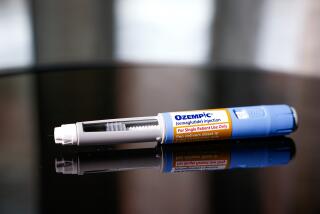Age of nip and tuck
- Share via
PERHAPS the explosion of cosmetic surgery in Los Angeles, a phenomenon that has spread to all corners of the civilized world, can be traced to the gene pool theory. Pay attention: There might be a quiz later, and the high scorer wins five free Botox treatments.
For many years, the prettiest girls and the handsomest boys in high schools all over this fair land were told, “You’re so attractive. You should go to Hollywood.” Many did, and tried to find work in the movies or, later, on television. The odds of stardom being what they are, few made their livings as performers. But they found other jobs, and as young people will, fell in love, got married and had babies. Their babies grew up and had babies. So the next time a visit to Starbucks reveals a disproportionately large percentage of good-looking Southern Californians, remember who contributed to the gene pool.
Now let’s consider the lucky few who do work in front of the camera. To a great degree, their success depends on how they look. It’s their job to sculpt and tone their bodies, to improve their smiles and perfect their features. When they’re not working, they move among the rest of us — shopping at the same stores, picking up their children at the same schools, dining at the same restaurants. If the woman sitting at the next table looks like Amanda Peet (or is), it’s easy to forget that she may have been born gorgeous. In any case, her profession mandates that she take advantage of any means available to maintain and enhance her appearance.
Modern plastic surgery was developed during World War I. Initially, its purpose was to rehabilitate disfigured soldiers and to correct deformities. It was driven by the notion that social acceptance depended on looking like other people, or fitting in. Then, in the 1960s, elective plastic surgery blossomed into a social phenomenon in Southern California, becoming something of a competitive sport. Many women — not only socialites and movie stars — decided that if improving one’s looks was desirable, perfecting them would be even better. As the art of the possible grew, women asked their doctors for Pamela Anderson’s breasts, Angelina Jolie’s lips or Jennifer Lopez’s bottom. They wanted the best.
Of course, altering nature with nips, tucks, implants, wrinkle fillers and veneers is a business as well as an art. At a time when glossy magazines flourish by revealing celebrities’ favorite lotions and practitioners, even the implicit endorsement of someone famous translates into marketing gold. The delusion that acquiring a nose or chin can transform an ordinary person into the equal of a star is seductive. Yet by beaming images of beauty to an audience no longer passive about its appearance, Los Angeles has fueled the imaginations of all those who dream of seeing in the mirror what they’ve admired from afar.
If L.A.’s burgeoning beauty culture has shown us anything, it’s that it can be hard to be a cosmetic surgery virgin, determined to age as nature intended. The genetically blessed and professionally perfected have raised the bar, thereby changing the standards of good grooming. These days, external self-improvement is widely considered a moral imperative, the right thing to do for those who have, or want to achieve, self-esteem. Walking around with a furrowed forehead or teeth stained by time and red wine has become the equivalent of going out with dirty fingernails. It’s possible to fix that.
Why wouldn’t you? Aren’t you worth it? It’s a do-it-yourself, makeover world.






